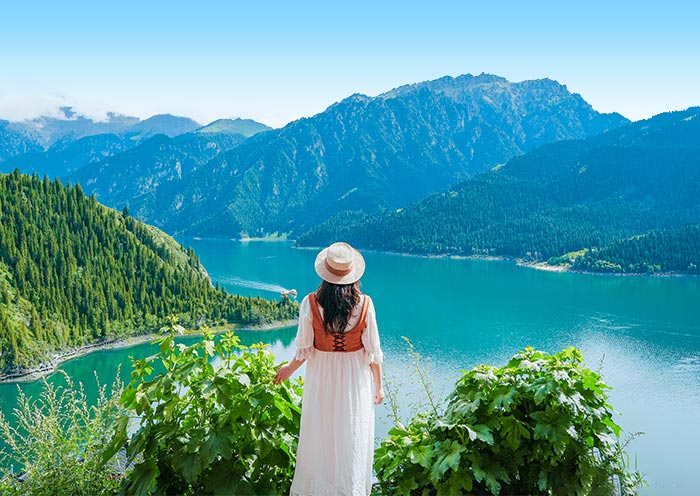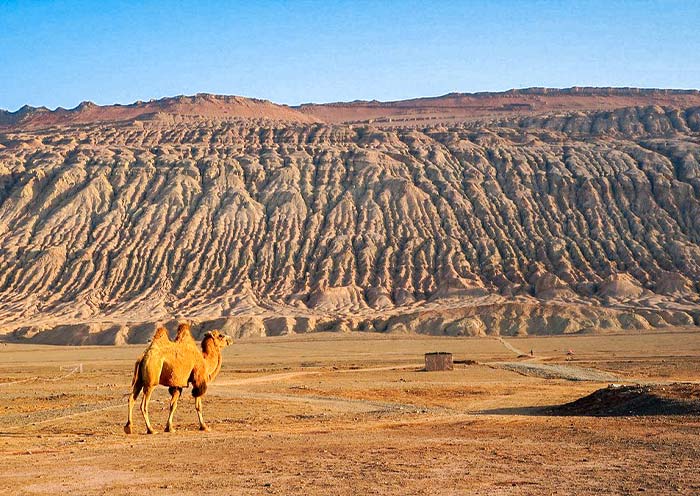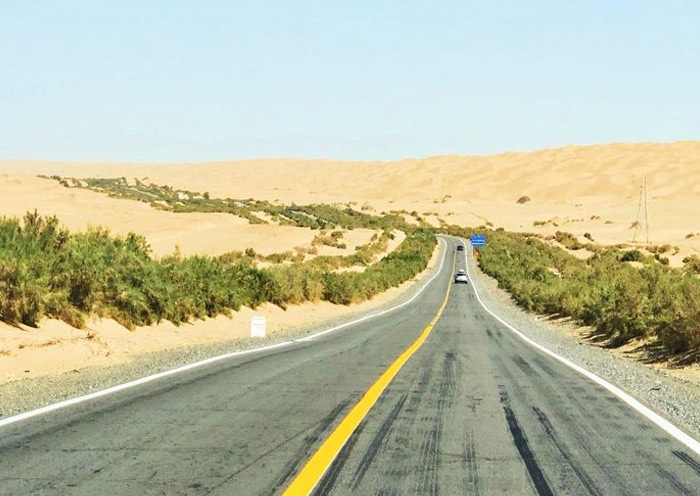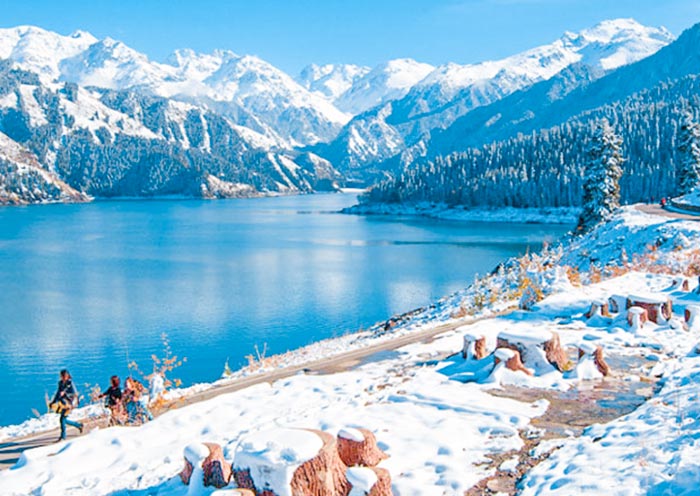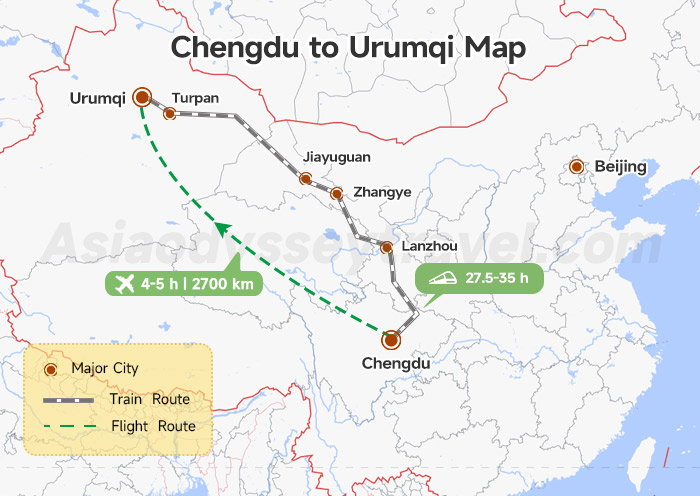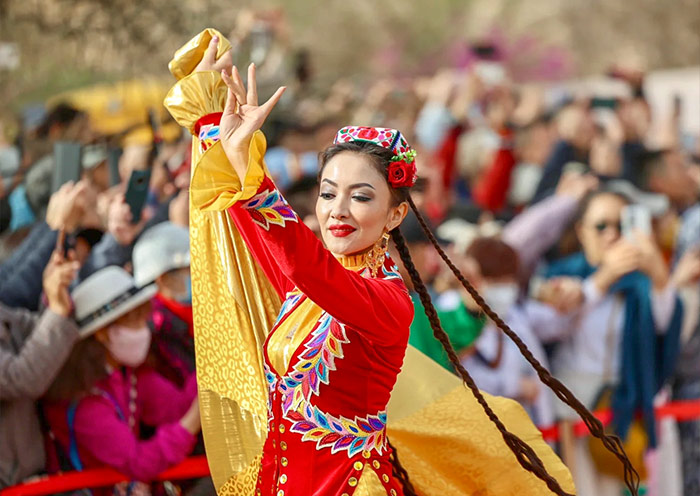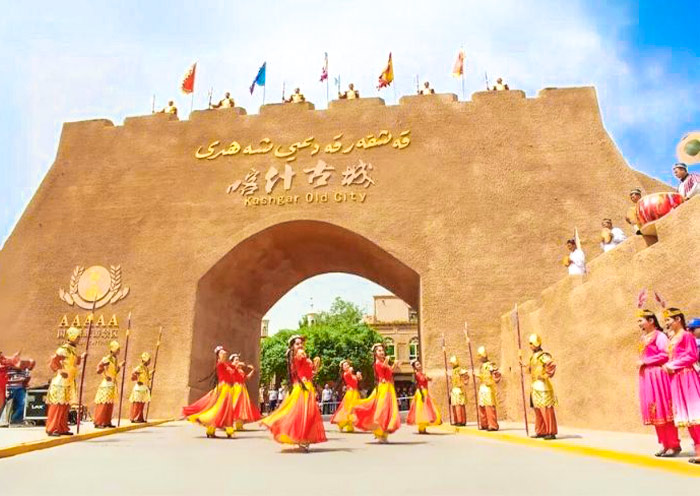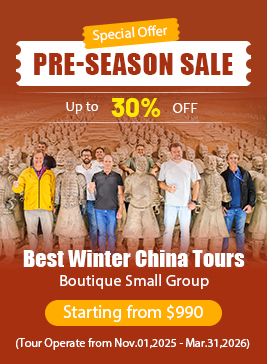Jiaohe Ruins Fact

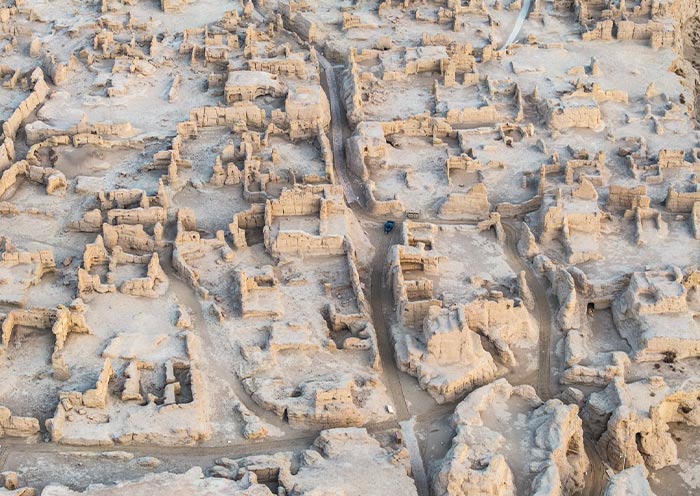
- Chinese: 交河故城 (jiao he gu cheng)
- Area: 470,000 m²
- Room Amount: 1389 rooms
- Construction time: 200 BC
- Destruction time: 14th century AD during war
The Jiaohe Ruins are situated 10 kilometers west of Turpan City in the Xinjiang Uygur Autonomous Region of China. The site is located on a 30-meter-high plateau between two rivers, hence the name "Jiaohe," which means "where rivers meet." The Jiaohe Ruins site stretches approximately 1650 meters long, stretching in a southeast-northwest direction, with narrow ends and a widest point of about 300 meters in the middle, forming a willow leaf-shaped peninsula. In 2014, Jiaohe Ruins were successfully inscribed on the UNESCO World Heritage List as part of the joint application "Silk Roads: the Routes Network of Chang'an-Tianshan Corridor," submitted by China, Kazakhstan, and Kyrgyzstan.
The Jiaohe Ancient City was constructed using local loess soil as the primary material. Local inhabitants compacted and piled up the loess soil, then hollowed out the middle to create the walls of the houses. Wooden planks were used to cover the roofs, completing the construction of a house. To escape the summer heat and store food, underground rooms were also dug and constructed. After enduring millennia, the wooden planks of the roofs have long disappeared, while the compacted earth walls stand tall and resilient against the wind and rain, forming the broken walls and remnants that we see today.
Jiaohe Ruins History


The Jiaohe Ruins was the capital city of the ancient kingdom of Jushi (Cheshi车师国), one of the 36 kingdoms in the Western Regions (Xiyu西域). It was established around 200 BC and served as the political, economic, and cultural center of the Cheshi kingdom.
In 139 BC, Zhang Qian (张骞) was dispatched by the Emperor of the Han Dynasty from Chang'an to explore the Western Regions via the Hexi Corridor (河西走廊in the present-day area around Dunhuang, Gansu), passing through the kingdom of Jushi. This journey initiated the opening of the Han Dynasty's northern and southern routes to the Western Regions, marking the genesis of the renowned Silk Road.
During the Tang Dynasty (618-907), Jiaohe City developed into the administrative and military center of Xinjiang. Many of the remaining structures were built during the Tang Dynasty, and the city's layout resembled that of the Tang period.
By the end of the 14th century during the late Yuan Dynasty, due to continuous warfare, Jiaohe City suffered severe damage and was eventually abandoned and left deserted to this day. Over the centuries, enduring the ravages of time and weather, the Jiaohe Ruins have evolved into the scale we see today. Due to its remote location, it escaped the fate of complete destruction or reconstruction on the original site, allowing us to witness genuine urban relics from a thousand years ago.
Jiaohe Ruins Layout

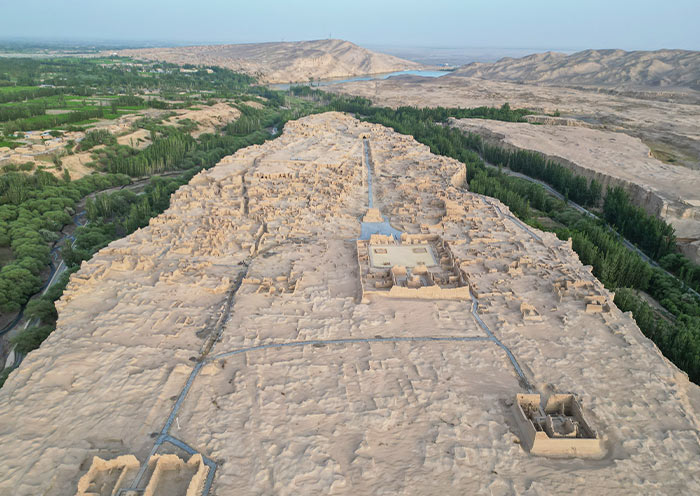
Jiaohe Ancient City is bisected by a 340-meter central avenue running from southeast to northwest, dividing the city into two main sections. The smaller western section primarily consists of a modest temple district, artisan workshops, and a limited residential area. The larger eastern section is further subdivided into northern and southern regions. The southern part houses the administrative district and the northern houses the main residential area.
At the northwest end of the central avenue stands a Grand Central Pagoda. North of the pagoda is a larger complex of buildings known as the Grand Buddhist Temple. Continuing northward, one encounters two relatively independent Buddhist temple areas: the Northwest Buddhist Temple and the Northeast Buddhist Temple. Beyond the temples, in a more secluded northern area, lies an impressive group of stupas.
Ancient City of Jiaohe Scenic Area Viewing Routes
Getting to the Site
The south gate is the primary entrance for visitors to the Jiaohe Ancient City ruins. From the visitor center, you can either walk or take a paid shuttle bus to reach the south gate. The walking distance is approximately 2 kilometers, taking about half an hour. Along the way, you'll pass through Jiaohe Ancient Village, a small folk display area built to resemble the structures within the ancient city ruins. Given the hot local weather, it is recommended to take the shuttle bus, which is not only time-saving but also allows you to drive around the outer perimeter of the ancient city.


Exploring the Ancient City
Upon entering through the south gate, follow the main central avenue northward to visit the following attractions:
- Government Office Area: This was the residential and administrative area for ancient officials, located in the heart of the city. The layout of the central area of the government office reflects the characteristics of cities in the Central Plains, and the underground rooms are well-preserved.
- Residential Area: This was where ancient residents lived and is scattered throughout the city. The area north of the government office is particularly well-preserved. The density of the houses is enough to imagine the prosperity of the Silk Road trade.
- Grand Central Pagoda: Located at the northwest end of the central avenue, this is a square building with a side length of 13.6 meters. The remaining height of the pagoda is 8.5 meters, making it quite eye-catching.
- Grand Buddhist Temple: The most magnificent Buddhist temple in the ruins, it is a rectangular temple measuring 88 meters north-south and 59 meters east-west. The temple faces south with a front yard and a rear hall. The central square pillar of the main hall contains 28 niches, a truly grand sight.
- Northwest Buddhist Temple: A square temple with a side length of 21.6 meters, facing south with a front yard and a rear hall.
- Northeast Buddhist Temple: A square temple with a side length of 32 meters, facing south with a front hall and a rear yard.
- Stupa Forest: Located in the northeast part of the city, it was built in the 5th century and contains 101 stupas for storing the ashes of monks. The central stupa has an Indian style, while the surrounding stupas are more influenced by the Central Plains, highlighting the impact of the Silk Road on Jiaohe Ancient City.


Tips for Visiting:
It takes approximately 2-3 hours to visit all the above attractions. You can choose to visit only part of the site based on your time constraints.
Please note that there are no large trees or roofs for shade within Jiaohe Ancient City, so it is recommended to visit during sunrise or sunset and take precautions against sunburn.
How to Get to Jiaohe Ancient City
To reach the Jiaohe Ancient City, you first need to get to Turpan. Turpan is located in the eastern part of the Xinjiang Uygur Autonomous Region, just 200 kilometers away from the capital city of Urumqi. You can reach Turpan from other parts of China by plane or train, or by transferring from Urumqi by car.
By Plane
Turpan Airport (TLQ) is the only airport in Turpan, connecting various regions within the Xinjiang Uygur Autonomous Region such as Kashgar (2h), Loulan (1.5h), Aksu (1.5h), Altay (1h), and Yining (1.5h), as well as other major cities in mainland China like Beijing (5h), Guangzhou (7.5h), Chengdu (5h), Dunhuang (1h), and Xi'an (4h). The airport is approximately 17 kilometers from the Jiaohe Ancient City, and you can reach there by taxi in about half an hour.
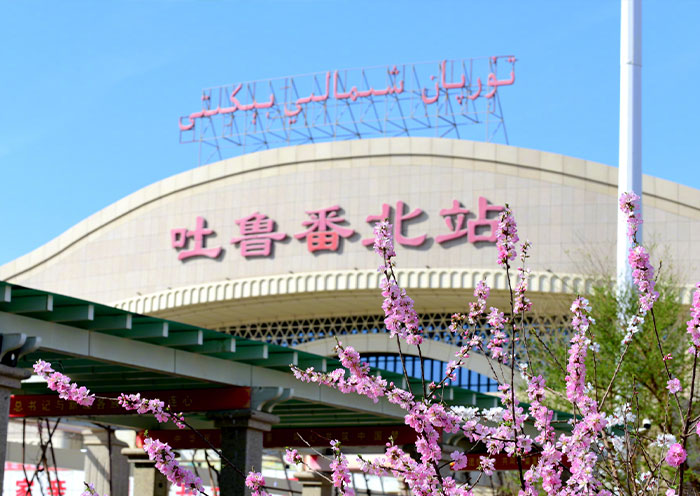

By Train
Turpan North Station is a high-speed railway station built in 2014, located just 500 meters from Turpan Jiaohe Airport. The high-speed railway connects westward to Urumqi (1h) and eastward to Hami (2h), Dunhuang (Liuyuan South 3.5h), Zhangye (7h), Xining (8.5h), Lanzhou (10h), and Xi'an (13h). The distance from Turpan North Station to the Jiaohe Ancient City is approximately 16 kilometers, and it takes about half an hour by car.
Turpan Station is a regular railway station in the northwest part of Turpan, built-in 1960. Turpan Station connects westward to Urumqi (2h), Korla (3.5h), Kashgar (14h), and further east to distant cities like Beijing (35h), Shanghai (38h), and Guangzhou (47h). The distance from Turpan Station to the Jiaohe Ancient City is approximately 40 kilometers, and it takes about an hour by car.
By Car
If you depart from Urumqi to reach the Jiaohe Ancient City, you can take a long-distance road journey covering nearly 200 kilometers, with a travel time of around 3 hours.
Best Time to Visit Jiaohe Ruins
The best time to visit the Jiaohe Ruins in Turpan, China, is during the spring and autumn months, specifically from April to June and September to November. During these periods, the weather is generally mild and pleasant, making it ideal for exploring the ancient ruins without extreme heat or cold. Spring brings blooming flowers and greenery to the surroundings, enhancing the scenic beauty of the site. Autumn offers comfortable temperatures and clear skies, perfect for sightseeing and photography.
Summer, from June to August, is the peak season but can be scorching hot. If you choose to visit during the summer months, it's advisable to plan your trip for early mornings or late afternoons to avoid the peak heat of the day.
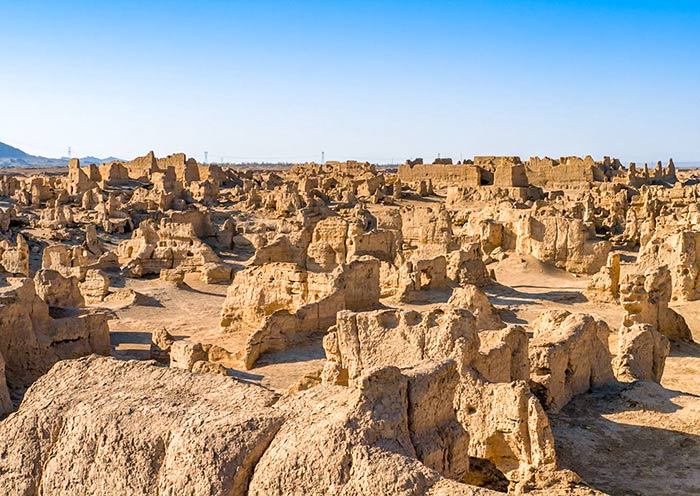

By planning your visit to the Jiaohe Ruins during the recommended spring and autumn seasons, you can enjoy a more comfortable and rewarding experience amidst the historical remnants of this ancient Silk Road city.
Useful Tips for a Trip in the Ancient City of Jiaohe
When planning a trip to the ancient city of Jiaohe, a well-preserved archaeological site near Turpan in Xinjiang, China, consider the following tips to enhance your experience:
- Wear Comfortable Footwear: The terrain at Jiaohe can be uneven and rocky, so wear comfortable shoes suitable for walking on ancient pathways.
- Bring Ample Water and Sun Protection: Xinjiang has a dry climate, so stay hydrated by carrying enough water. Additionally, bring sunscreen, a hat, and sunglasses to protect yourself from the sun.
- Visit Early or Late in the Day: To avoid crowds and the heat, consider visiting Jiaohe early in the morning or later in the afternoon.
- Respect the Historical Site: Help preserve the heritage of Jiaohe by not touching or climbing on the ancient structures. Follow designated pathways and respect any signage.
- Learn About the History: Familiarize yourself with the history of Jiaohe before your visit to appreciate the significance of the site.
- Take Your Time Exploring: The ancient city of Jiaohe has well-preserved ruins and offers a glimpse into its past. Take your time to explore the various structures and soak in the history.
- Capture Memories: Bring a camera to capture the unique architecture, panoramic views, and intricate details of the ancient city.
- Stay Overnight in Turpan: Consider staying overnight in Turpan, a nearby city, to explore other attractions like the Flaming Mountains and the Emin Minaret.
- Try Local Cuisine: Sample local Uyghur cuisine in Turpan, known for dishes like lamb kebabs, hand-pulled noodles, and raisins.
- Check for Entry Requirements: Verify if there are any entry fees or permits required to visit Jiaohe and ensure you have the necessary documentation.
By following these tips, you can make the most of your visit to the ancient city of Jiaohe, immersing yourself in its historical charm and architectural wonders while enjoying the unique cultural experiences of this ancient Silk Road site.
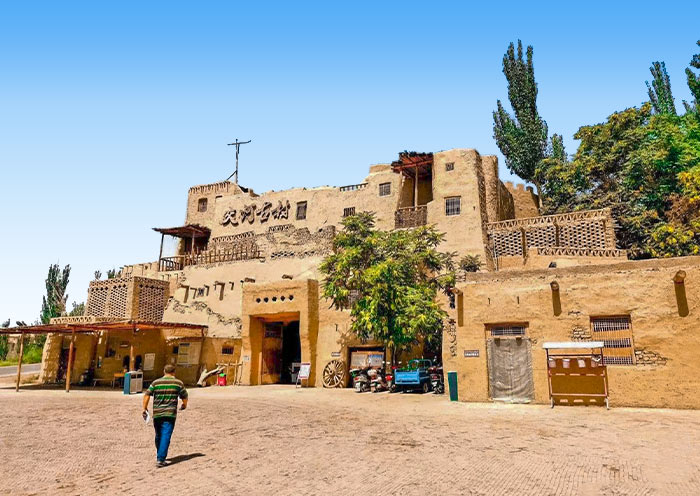
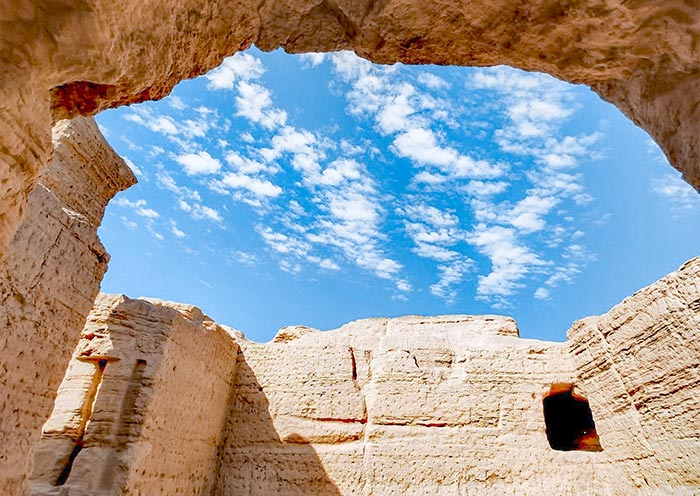
Nearby Attractions to Jiaohe Ruins
When visiting the Jiaohe Ruins near Turpan in Xinjiang, China, you can explore several other nearby attractions that offer a diverse range of cultural, historical, and natural experiences. Here are some notable attractions to consider visiting in the vicinity of the Jiaohe Ruins:
- Turpan Museum: Explore the Turpan Museum to learn more about the history and culture of the region, including exhibits on Silk Road artifacts and local archaeology.
- Emin Minaret (Su Gong Ta): Visit the Emin Minaret, a well-preserved Islamic minaret in Turpan, known for its unique Uyghur architecture and historical significance.
- Grape Valley (Pu Tao Gou): Discover the Grape Valley, an oasis near Turpan famous for its vineyards, where you can taste local grapes, raisins, and wines.
- Bezeklik Thousand Buddha Caves: Explore the Bezeklik Thousand Buddha Caves, a complex of Buddhist cave temples with well-preserved murals and sculptures dating back to the Tang Dynasty.
- Flaming Mountains (Huo Yan Shan): Marvel at the Flaming Mountains, a unique red sandstone geological formation near Turpan, known for its striking appearance, especially at sunset.
- Karez Water System: Learn about the ancient Karez underground irrigation system, a network of tunnels and wells that has provided water to the region for centuries.
- Astana Graves: Visit the Astana Graves, an ancient burial site near Turpan containing well-preserved mummies, artifacts, and murals dating back to the Tang Dynasty.
- Tuyoq Valley: Explore the picturesque Tuyoq Valley, home to ancient cave dwellings, a Uyghur mosque, and stunning natural scenery.
By exploring these nearby attractions, you can delve deeper into the history, culture, and natural beauty of the Turpan region while complementing your visit to the ancient Jiaohe Ruins.


How to Plan a Trip to Jiaohe Ruins in Turpan
The trip to Turpan Jiaohe Ancient City usually starts from Urumqi and ends in Urumqi, a total of 2 days. The specific itinerary is as follows:
Day 1: Urumqi to Turpan
In the morning, embark on a journey from Urumqi to Turpan, a drive that spans approximately 3 hours. Along the way, marvel at the stunning landscapes as you pass through the majestic Flaming Mountains Grand Canyon. Upon reaching Turpan, delve into the local culture by visiting Mazha Village in Tuyugou Valley and Bezeklik Thousand Buddha Caves. Stay overnight in Turpan and treat your taste buds to the flavors of local cuisine.
Day 2: Return to Urumqi after Sightseeing
Begin the day by visiting the iconic Emin Minaret, also known as the Sugong Pagoda. Next, explore the innovative Karez Well System, an ancient underground irrigation network that has sustained life in the arid Turpan region for centuries. Then make your way to the highlight of your journey – the Jiaohe Ruins. After the exploration in Turpan, make your way back to Urumqi with another 3-hour drive.


Travel with Asia Odyssey Travel, Culture & Nature Xinjiang Tour
First-time visitor or not, Xinjiang is Not What You Think. It's More Than What You Imagine!
Looking for natural grandeur? Experience the the sunrise at pristine Kanas Lake, the sky-touching Naraty Grassland, the boundless Taklamakan Desert along the acient Xinjiang Silk Road.
Looking to broaden your horizons? Discover exquisite Uyghur crafts at the bazaars at Kashgar, the nomadic dances of Tajiks on the Pamir Plateau at Tashkurgan, and the finest vineyards at Grape Valley at Turpan. You can even visit the oldest Buddha Grottoes in China!
Your Xinjiang Trip will be an eye-opening adventure and a soul-touching journey!
Asia Odyssey Travel: Your Best Xinjiang Guide
- Genuine Service: Not just an agency—we are your travel companions.
- Exclusive Access: Secure your tickets and accommodations even in high season.
- Authentic Experience: Best local guides with cultural insights.
- Travel Made Easy: Flights, hotels, activities—all taken care of!
- Skip the Tourist Routine: Avoid all tourist traps and travel down to earth
- 24/7 Support: Always on-line for your peace of mind
Asia Odyssey Travel, leading your China Adventure Since 2010. What's your travel idea? Let's talk!


